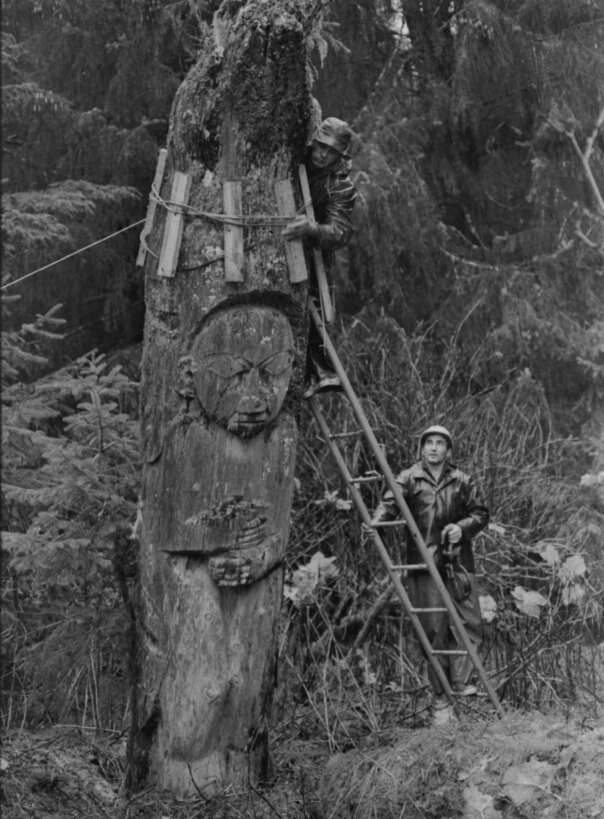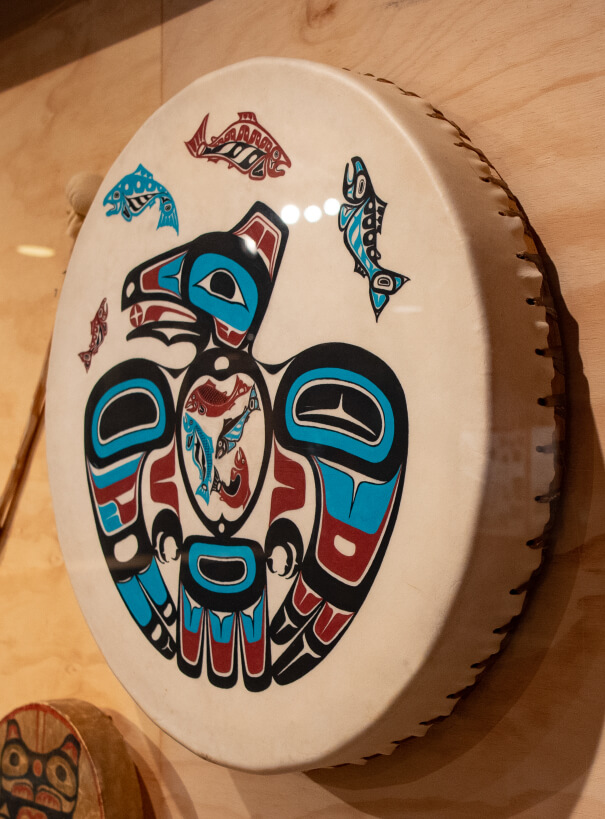TOTEM HERITAGE CENTER
Totem Poles
The Totem Heritage Center houses an invaluable collection of 19th century totem poles retrieved in the 1970s from the Tlingit villages on Tongass Island and Village Island and from the Haida village of Old Kasaan on Prince of Wales Island. The inhabitants of these villages moved to Ketchikan and other towns at the beginning of the 20th century in order to be near schools and churches, as well as the canneries, mines, and sawmills that offered employment.
With the guidance of Native elders, the Alaska State Museum and the Alaska Native Brotherhood carried out the totem pole retrieval. Elders also provided valuable cultural and historical information about the totem poles. The Smithsonian Institution and the U.S. Forest Service provided technical assistance.
The totem poles in the Heritage Center were created by carvers during the height of totem pole carving on the Northwest Coast, between the middle and the end of the 19th century. They are preserved as they were found at the village sites. Though all of the poles are severely weathered, much of their original detail survives as testimony to the skill and sophistication of their carvers. Some still have traces of original paint; portions of others were obscured by moss and other vegetation that took root in the wet wood of the totem poles as they slowly decayed over time.
Traditionally, totem poles were carved to honor important individuals, commemorate significant events, and to proclaim the lineage and social standing of their owners. As such, they have great cultural importance, but are not religious objects and have never been worshipped. They are tangible references to the people, events, stories, and legends that figure in the oral histories of the thriving cultures of Northwest Coast Native peoples.
Many of the figures carved on totem poles are “crests”– animals, mythological beings, or natural features symbolizing a clan’s history and origins. These crests are the property of clans and have been passed down through generations to maintain the connection to their ancestors. The crests, along with the stories and history associated with the crests, are prized as intangible communal property. They also serve to define the identity and lineage of the group’s individual members.
While the figures on a totem pole might be readily recognizable, the pole’s meaning can only be understood if one knows the purpose and occasion for which it was created, as well as the individuals, groups, or stories associated with it. Such information was traditionally introduced when the pole was raised during a potlatch celebration, then passed down orally from generation to generation. Guests from other clans who attended potlatches and other ceremonies bore witness to the celebrated event, serving to acknowledge its importance as part of a wider collective memory. Unfortunately, in the case of many of the totem poles at the Center, these stories and histories have been lost.

Stone Ribs Totem Pole during the its retrieval, THC Collection

Stone Ribs Totem Pole during the its retrieval, THC Collection
Through classes, tours and research
Continuing the Tradition of Northwest Coast Art
The Totem Heritage Center is dedicated to preserving the cultural traditions that gave rise to the magnificent totem poles on display. Our Native Arts Studies Program classes and workshop in traditional Tlingit, Haida, and Tsimshian art uphold and strengthen these traditions for future generations. Certificates of Merit are offered in Basketry and Weaving, Carving and Engraving and Regalia Making.
Throughout the year, the Ketchikan Museums staff provide educational tours for school classes and cultural interest groups.
In addition, the Center maintains a collection of carvings, baskets, regalia, and photographs. These, and an extensive library of books and other resources, are available by appointment.

Totem Heritage Center exhibits include contemporary art like this "Salmon Run"drum from artist Ken Decker. KM 2019.2.1.1
